Summer is both prime time for gardening and prime time for travel and vacationing.
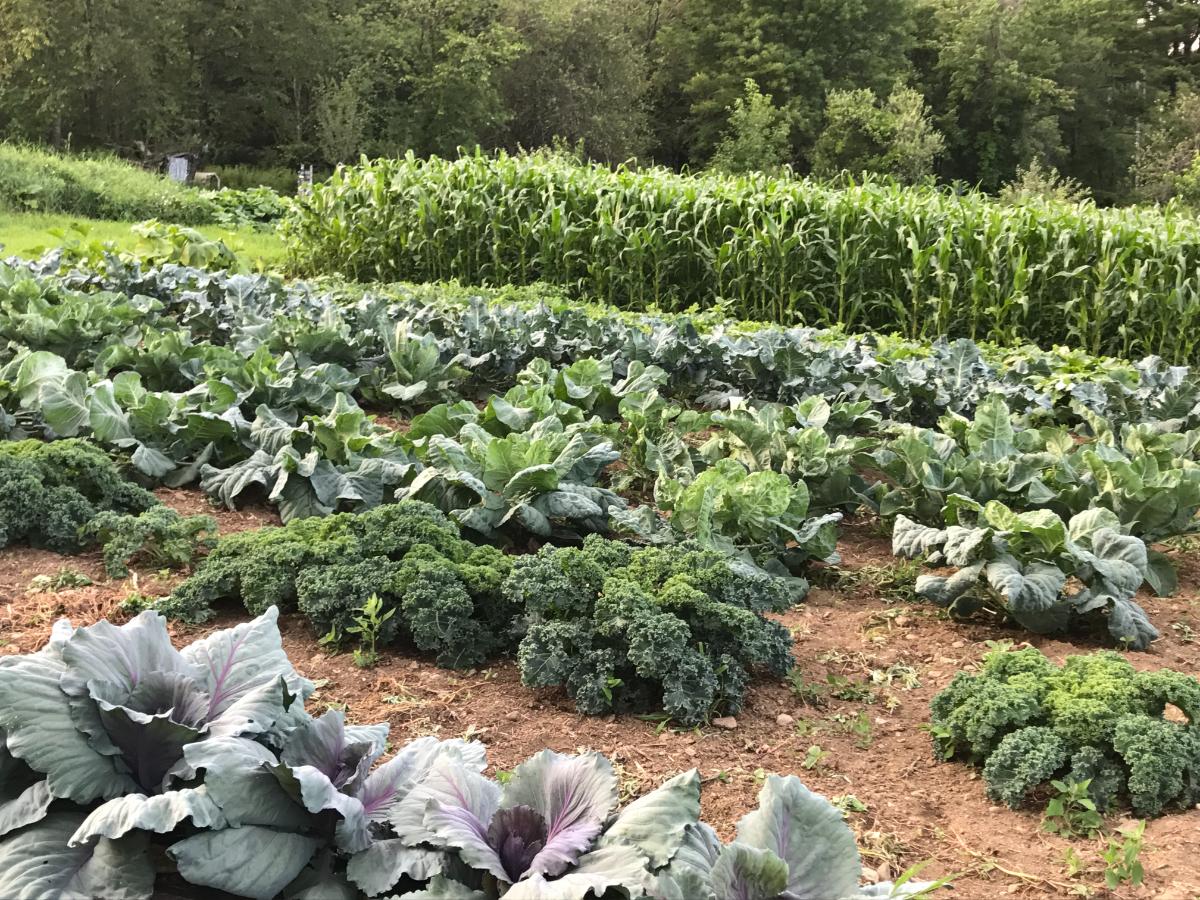
So, how do you do both?
How can you maintain your garden while you’re gone and set it up for success?
With a little bit of planning and some work, before you go, you can set your garden up for success while you’re gone – without coming back to a weedy jungle or crispy plants!
Without further ado, here are 17 tips to help you get your garden through a vacation with little to no intervention (and maybe without a garden sitter):
Jump to:
- 1. Watch the weather
- 2. Water well and deeply
- 3. Have a sitter/waterer for trips lasting more than one week
- 4. Set up waterers or soaker hoses before you go
- 5. Mulch
- 6. Floating row cover can prevent frost damage
- 7. Harvest what’s ready
- 8. Harvest what’s almost ready
- 9. Have someone harvest while you’re gone for extended periods
- 10. Deadhead flowering plants
- 11. Tie up tomatoes
- 12. Clip trellised vining plants
- 13. Move container plants to shade
- 14. For long trips, place containers in a pool of water
- 15. Use “automatic” stake-style waterers or globes for heavy drinkers and potted plants
- 16. Spray a dose of Neem oil
- 17. Bonus Tip: Plan to Give Your Garden Some TLC ASAP When You Get Home
1. Watch the weather
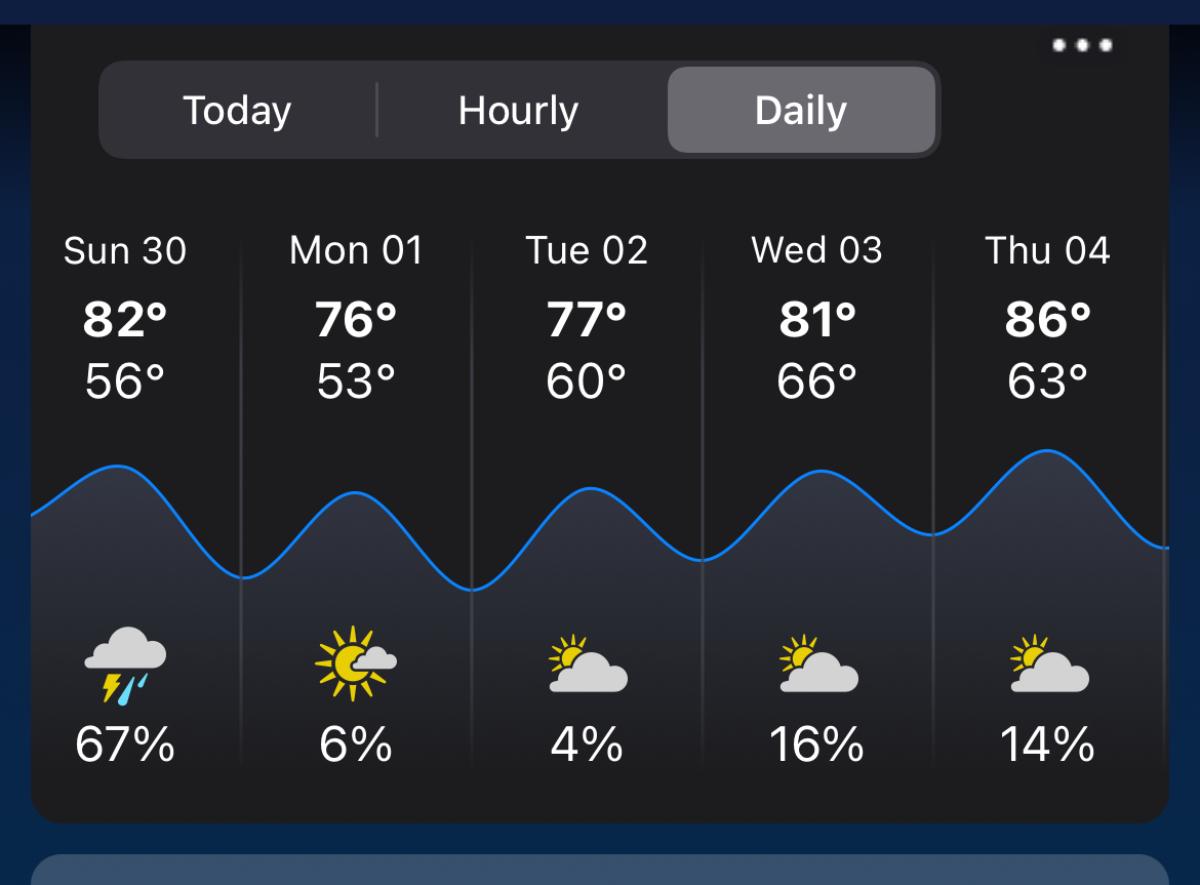
First, watch the weather and see what’s in store.
With today’s weather apps and forecasts, we can usually get a good idea of what’s to come in the next week and a fairly reliable forecast for up to two weeks in an extended forecast.
Of course, we all know these things are “subject to change,” but for the most part, you should be able to see if there are any periods of extreme heat, heat waves, or torrential rains for the next week or so.
Here are a few things to look for:
- Extended high heat and heat waves over 90° F (32° C) for three or more days
- Estimated rain totals
- Frost or low temperatures, if applicable for the time of year/ vacation period
2. Water well and deeply
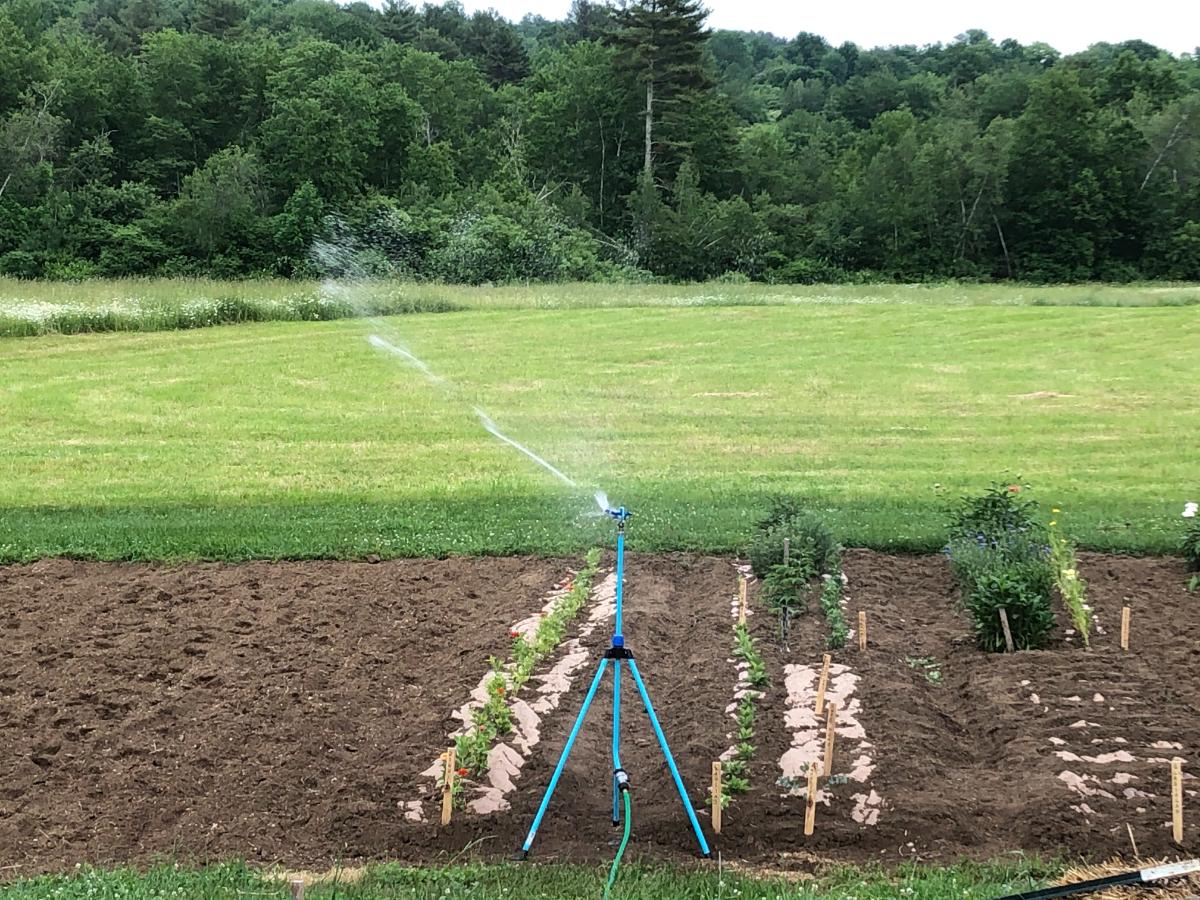
The day before you leave (or the morning of if you have the time), water your garden well.
Water it deeply so the roots reach down for water rather than sucking up a light layer of water from the surface.
Deep watering two or three times a week is always preferable for your garden (throughout the entire summer) because it encourages deep root growth. Deep roots can access moisture that is deeper under the surface.
Deep watering will help your garden through periods of dryness or drought and reduce your need to water.
Most vegetables need around one (1) inch of water per week. If the weather is hot or you live in a dry, arid climate, or your soil is sandy and doesn’t hold moisture well, you will likely need to provide one and a half to two inches of water per week (1 ½ to 2 inches).
If you have fast-draining soil that doesn’t hold moisture, it also needs more frequent watering.
So, to set your garden up for the period you will be gone
- Water deeply before you go
- Water close to the time when you are leaving to limit the amount of time your garden will go without water
- Overwatering by a bit (without overdoing it) can extend the period of time before your plants will struggle
- Water more than the typical 1 inch – go for 1 ½ to 2 inches of water
If you don’t have any major weather events in the forecast, this will get your garden through for a week. They may be plenty ready for water when you come back, but in a normal situation the plants can go the week.
If there is at least a quarter to half an inch of rain in the forecast for when you’re gone, your garden should be all set by prepping it ahead of time and letting natural rains and mother nature do their part over the next week.
If you do have extreme heat or a heat wave coming (more than three days of 90 F/32 C or above), make a plan for extra watering and have a friend, family member, neighbor, or garden sitter come into the water just before the heatwave and every three days until it’s done.
3. Have a sitter/waterer for trips lasting more than one week
If you’re going to be gone for more than one week, you’re going to want someone to come in and at least see to a few garden basics.
If you prep and pick your garden before you go, it should get through a week without outside help, but for longer than that, to keep your garden going, you’ll need someone to step in a couple of times.
See the tips below and at least have someone come into the water and pick. Weeding and maintenance like tying plants would be extra. Most gardens can get through it for up to two weeks without the regular maintenance, but harvesting and watering will need to be attended to.
Once again, though, this is where you want to take a look at the forecast and leave instructions based on how to water if it does or doesn’t rain.
4. Set up waterers or soaker hoses before you go
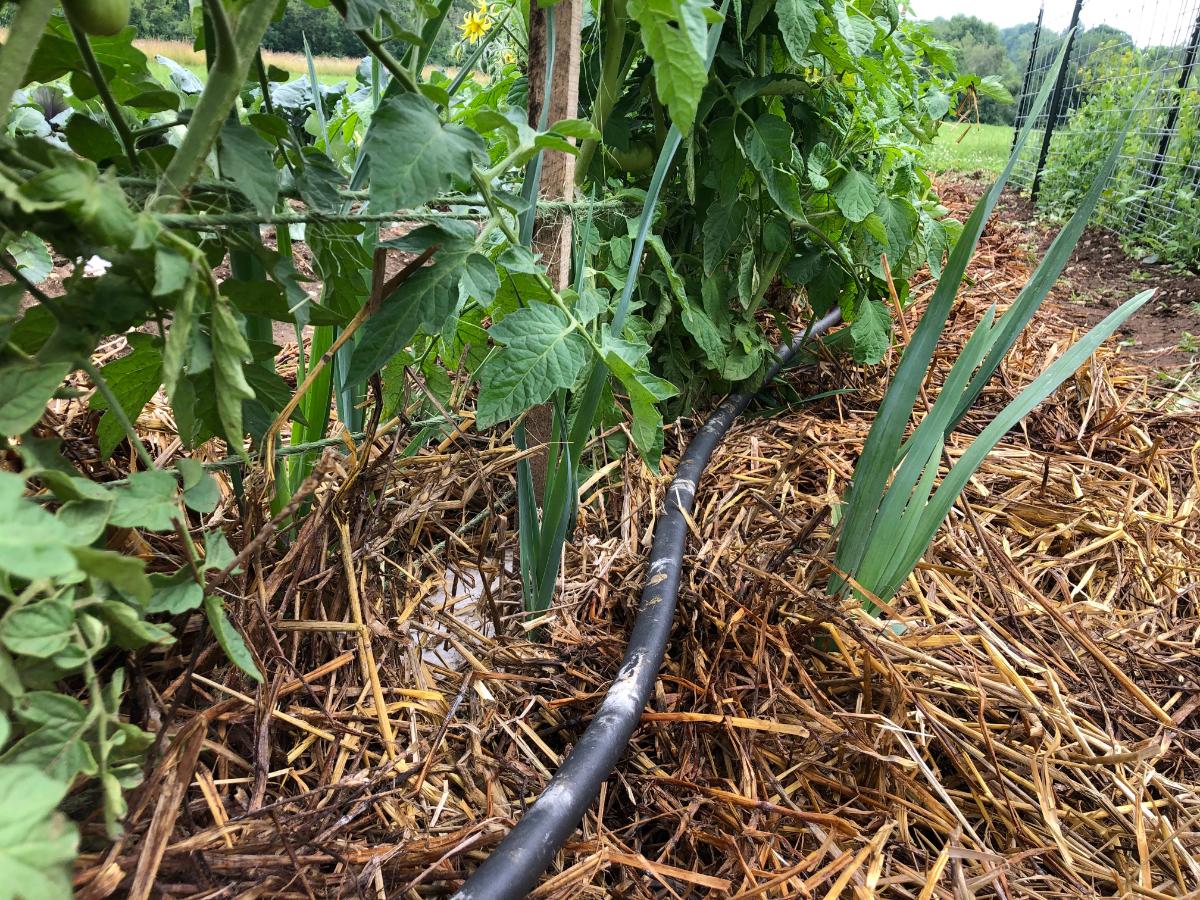
Set up your watering system for your garden sitter before you go.
Make it easy. Keep it simple.
You will know best how to water your garden and where the water is most needed.
- Run hoses and lay out sprinklers in a pattern that will reach all critical areas
- Soaker hoses or drip irrigation are best – they won’t water weeds (which will really help you when you get back!), and they won’t wet the plants, which invites plant diseases
- Make it simple so all your garden sitter needs to do is turn on a valve and let it go
- To help your sitter know when enough is enough, set out a rain gauge or sink a can in the line of the waterer. When it reaches one inch, tell them to turn off the water.
5. Mulch
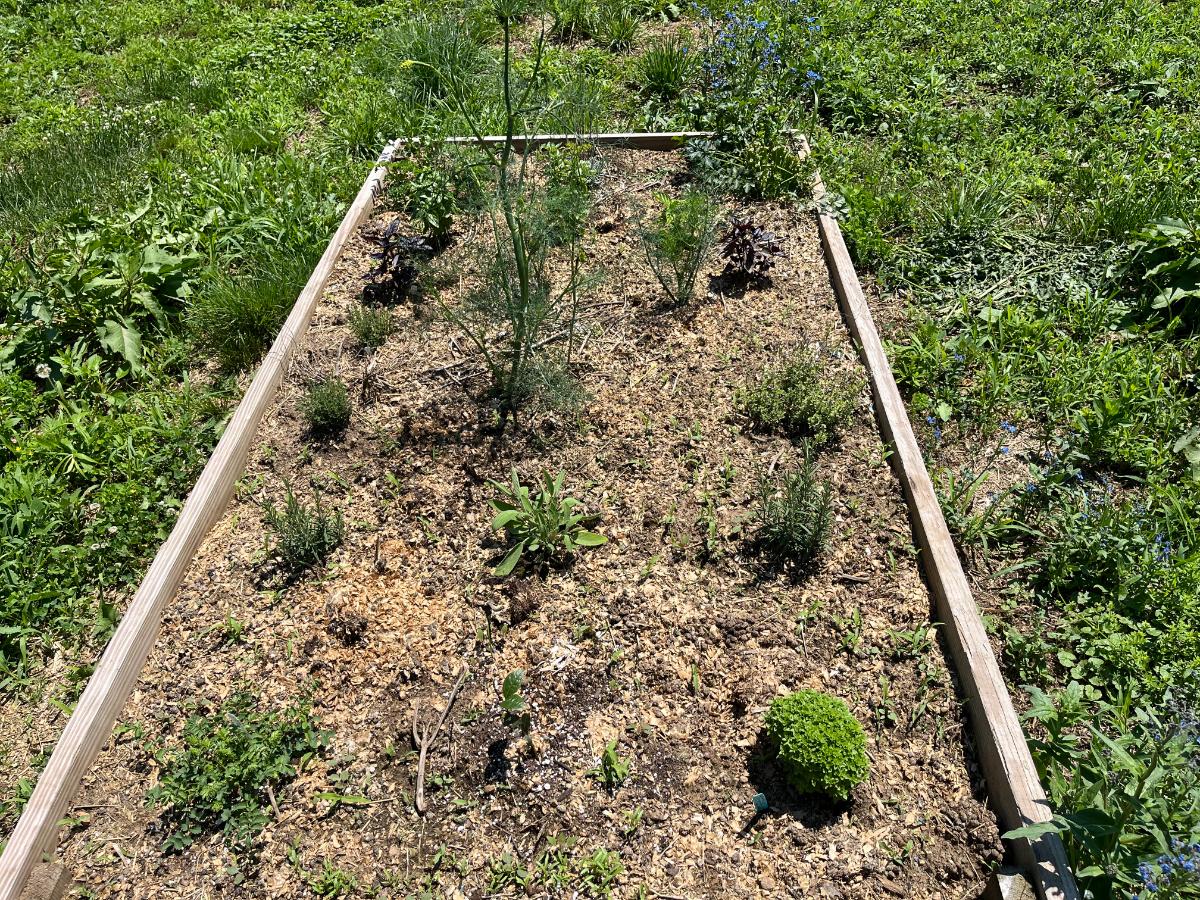
Mulching your garden is a good idea for a variety of reasons.
Preserving moisture is top among them.
Mulch around your garden plants and it will help the soil to retain the water it gets both from you and Mother Nature.
Mulch also reduces evaporation.
With a good two- to three-inch layer of mulch and a deep watering before you go, your plants should make it through all but the most intense heat just fine.
6. Floating row cover can prevent frost damage
Frost isn’t much of a concern during a summer vacation, but if your vacation comes early or late in the season and you want to keep your garden growing, you'll need a plan.
You can leave covering materials and instructions for your garden sitter if you have one.
If you don’t, or if you don’t want to put the extra work on them, consider installing floating row covers or covering with row cover fabric before you go (just make sure it’s anchored well).
Floating row cover is used for all sorts of things, including pest control, season extension, and frost protection. It allows light through, so your plants will still get enough light for the week.
7. Harvest what’s ready
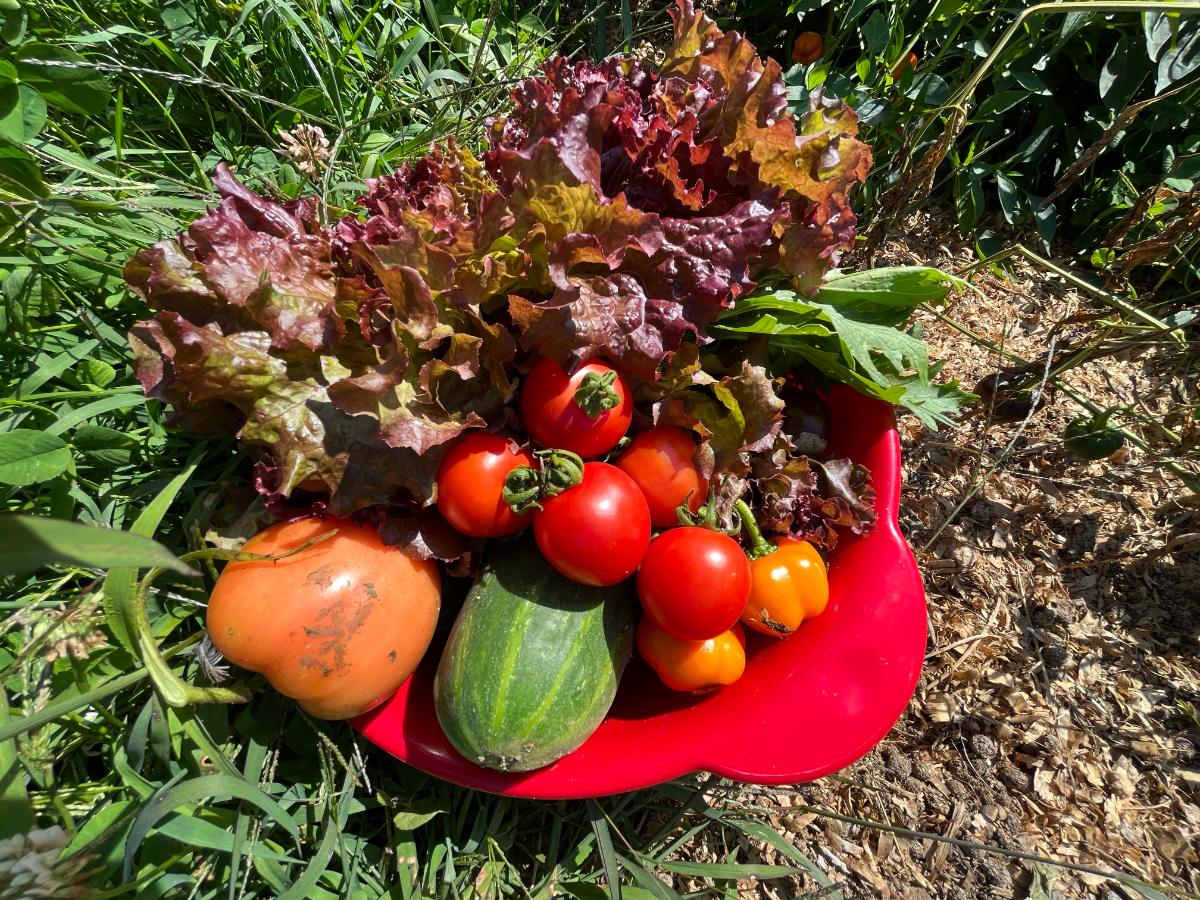
Leaving vegetables on the vine or plant when they are ready sends signals to the plant to shut down.
Before you go, make sure you pick your garden over thoroughly. Even if you don’t have time to use or preserve what you pick, it’s worth doing because if you don’t, you may slow or stop the production of your plants.
Most things will stay well in the refrigerator for a week and sometimes more, but if you can’t use what you pick, give it away or donate it to a local senior center or food pantry.
8. Harvest what’s almost ready
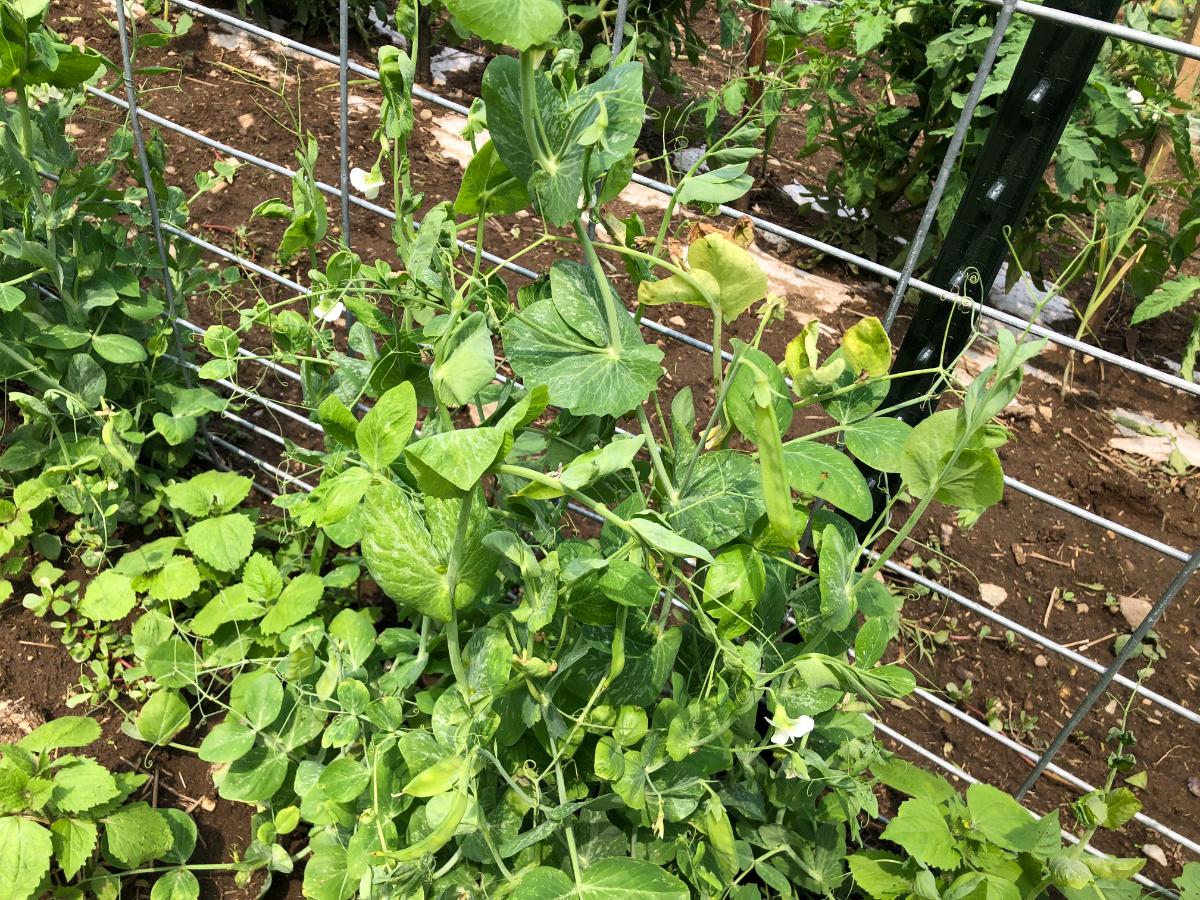
What is nearly ready now will be ready before you get back, and again, you don’t want your plants shutting down production because things stayed too long on the vine.
With only a few exceptions, many vegetables can be used a little on the young side.
- Edible pod peas are sweet and tender when picked small
- Green beans will be tasty, too, if a little on the small side
- Underripe tomatoes will continue to slowly ripen inside, so they’ll still be useful days from now, while green can continue to ripen over the vacation week
- Lettuce and greens have no problem being eaten young and should last a week in the refrigerator
- This won’t apply to most root vegetables, but radishes can split or bolt quickly, so they may be worth picking young...which will make them sweeter and milder
- Winter squash will be fine for an extra week, but all summer squash, zucchini, and cucumbers are better off picked young and small – they'll almost certainly be past their prime if you wait, and that will shut plants down
- Broccoli and cauliflower run the risk of opening or going to flower, but young florets are tasty, too, and you’re better off picking off earlier rather than later
9. Have someone harvest while you’re gone for extended periods
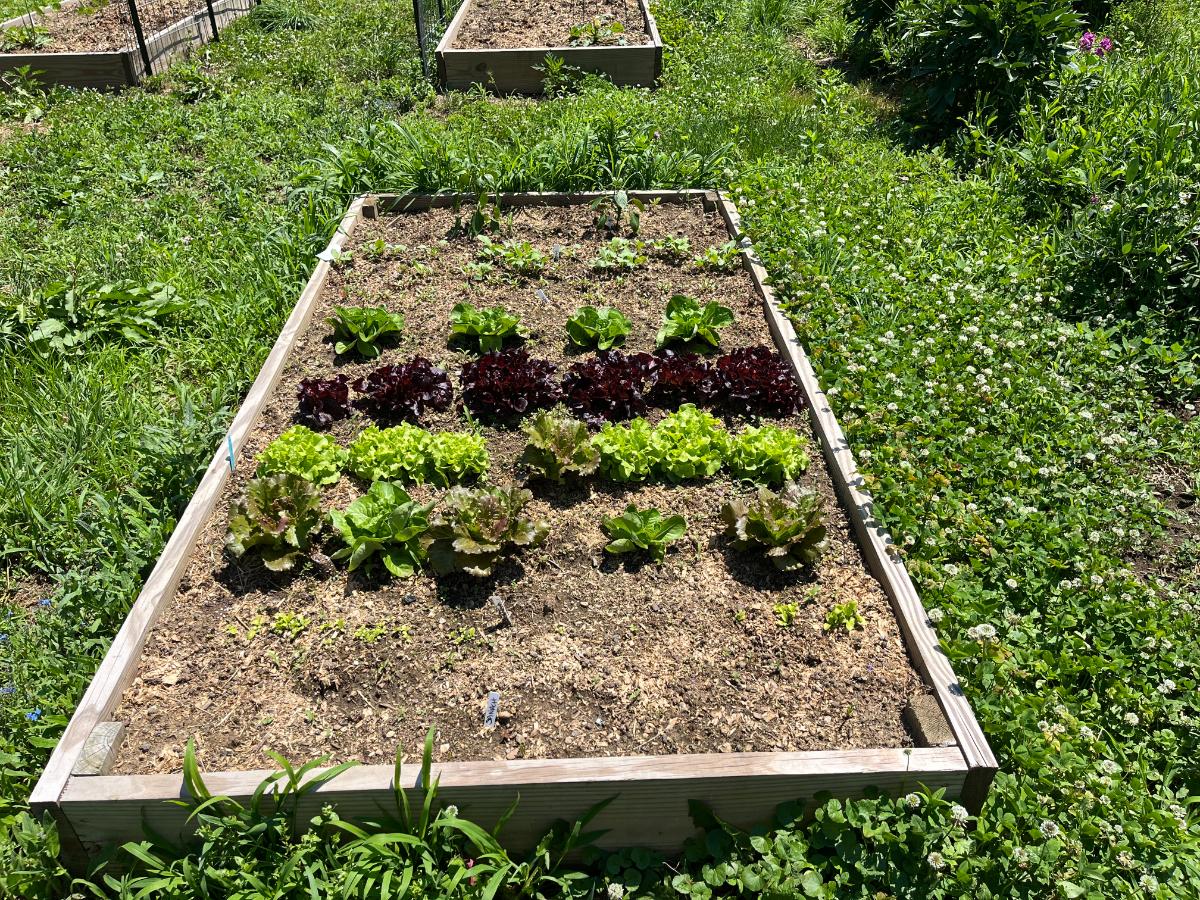
If you’re gone for more than a week, or if you can’t get to the picking, or the timing for early picking just isn’t working out, find a friend or family member who loves fresh veggies and invite them to pick while you’re gone.
This goes back to the fact that produce will either overripen and be ruined, and/or your plants will shut down and stop producing, and then all your efforts to keep your garden going when you’re away will be wasted.
10. Deadhead flowering plants
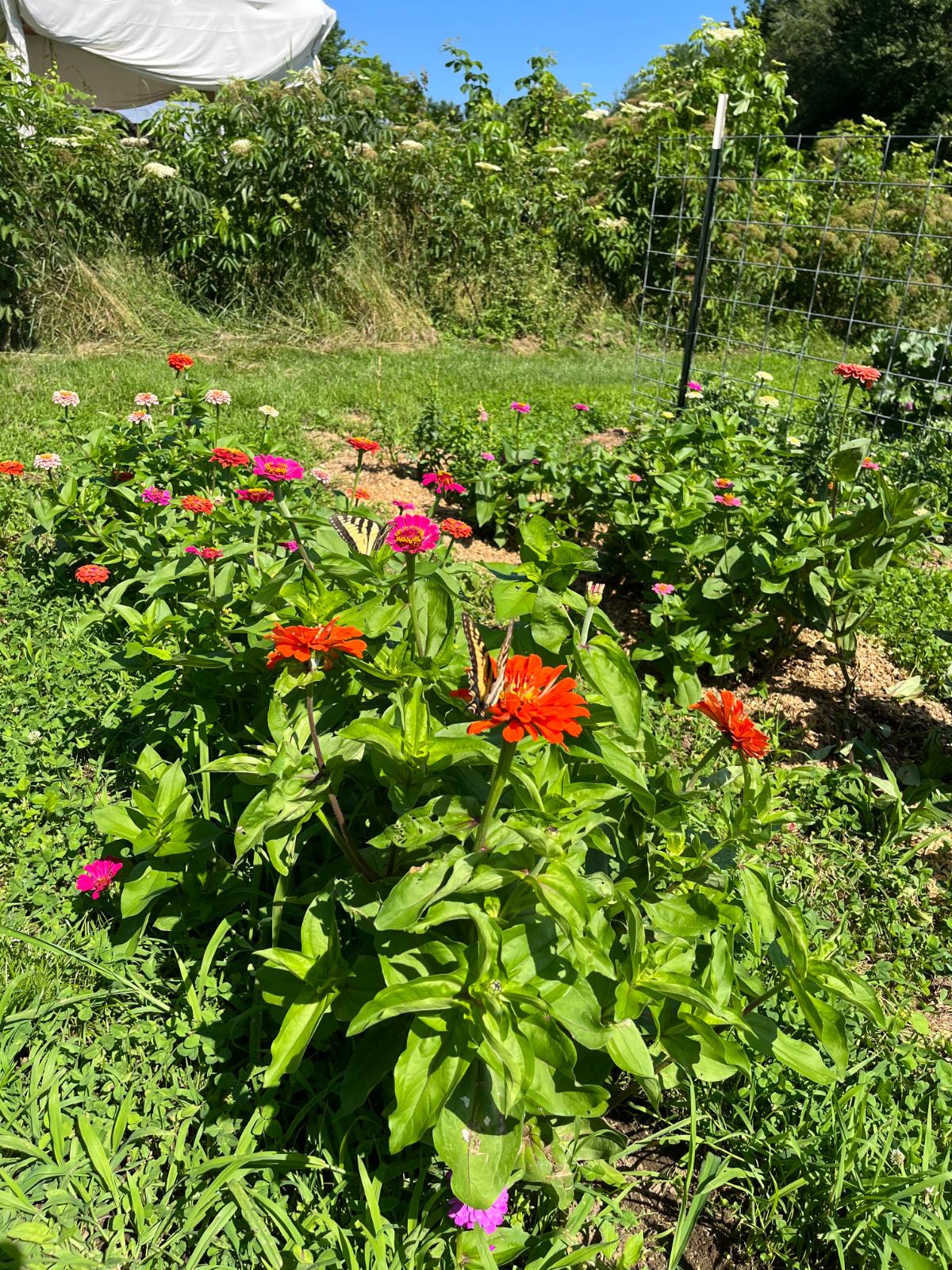
For flowers that should be deadheaded, do that before you go.
This concept is the same as picking fruit and vegetable harvests. If you leave spent flowers on the vine, the plant will start shutting down and sending energy into making seeds instead.
Deadheading will keep reblooming flowers blossoming. Do it before you go as close to departure time as you can manage, and that should get you through the next 7 to 10 days.
11. Tie up tomatoes
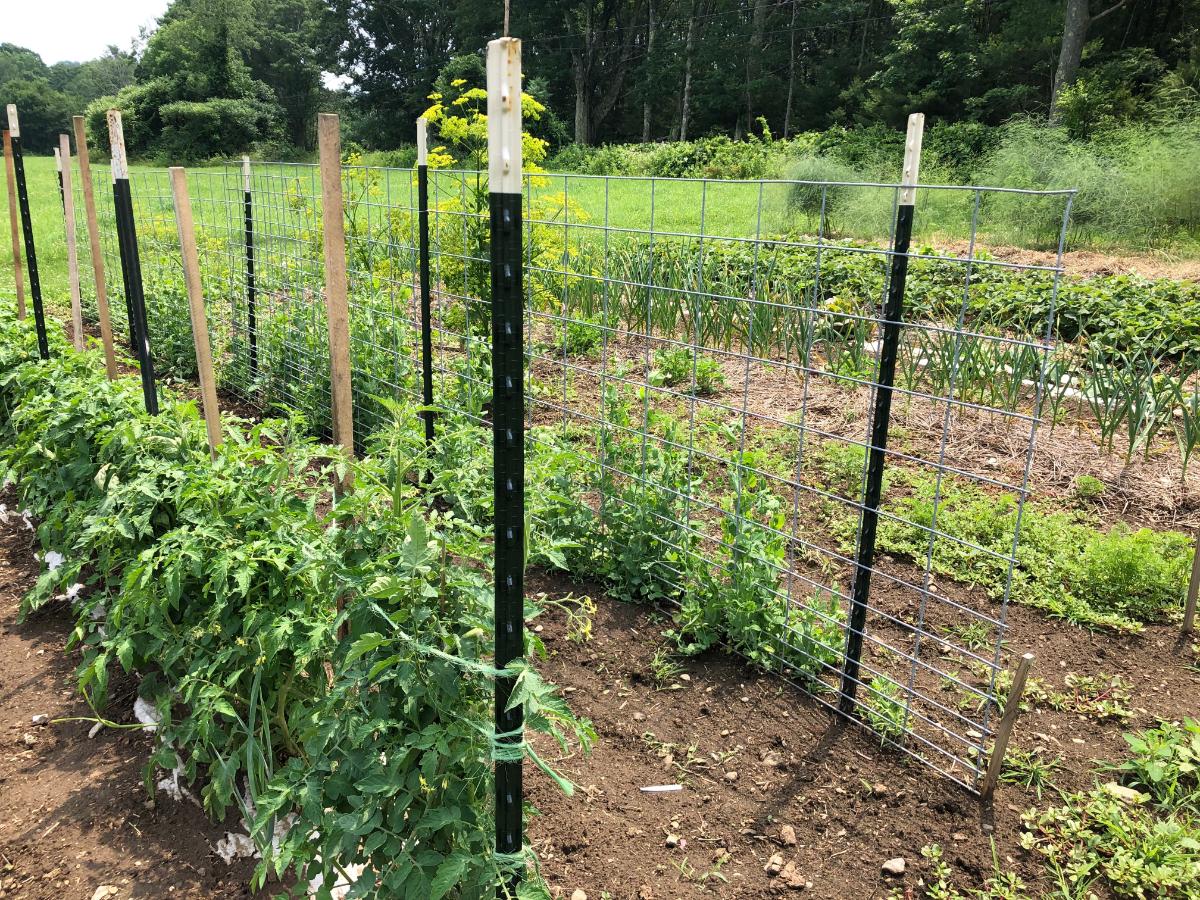
Don’t make the mistake of thinking that your tomato tying can be skipped.
In the peak of the summer, with plentiful heat and sun, your tomatoes will grow several inches in just a week.
That’s enough to have them toppling from untied portions.
The plants will grow in stem diameter, too, which means that the more mature stems will be thicker and harder and prone to breaking if you try to retrain them after you get back. Tie them up now and then again when you get home.
If you are pruning your tomatoes, you’ll also want to do that when you tie them. If you put this off, the small suckers that are easy to pinch off now will be thick and will cause larger wounds in another week or two.
Pruning large suckers causes large open wounds that weep excess moisture and make good entry points for diseases. It’s best to pull them off while they’re small and revisit upon your return.
12. Clip trellised vining plants
If you are growing plants on trellises, like fenced or trellised squash and pumpkins, for example, do a round of clipping before you go.
Just like with tomatoes, by the time you get back the vines will be thick and prone to breaking and hard to reroute. It’s best for the plants if you clip them up before you go.
13. Move container plants to shade

Container plants and container vegetable gardens are often trickier to keep well over a vacation period. The reason is that they dry out so much more quickly.
If you don’t have someone coming to water them every day or two and you can’t be sure of the rainfall, do what you can to slow down the evaporation and drying of the soil.
One good way to do this is to move the plants into the shade.
While a week in the shade may slow your container plants’ growth, it won’t stop it, but it will seriously reduce their need for watering.
14. For long trips, place containers in a pool of water
If you’re going on a long trip or if you know the heat will be intense, you can also put the container plants in a kiddie pool with water.
Of course, they will need drainage holes that come in contact with the water so moisture can be soaked up from the bottom up, but this is a good way to make those pots self-watering.
You don’t have to fill the pool, and the plants shouldn’t be floating in it. Depending on how many pots are in the pool, two or three inches should do it.
15. Use “automatic” stake-style waterers or globes for heavy drinkers and potted plants
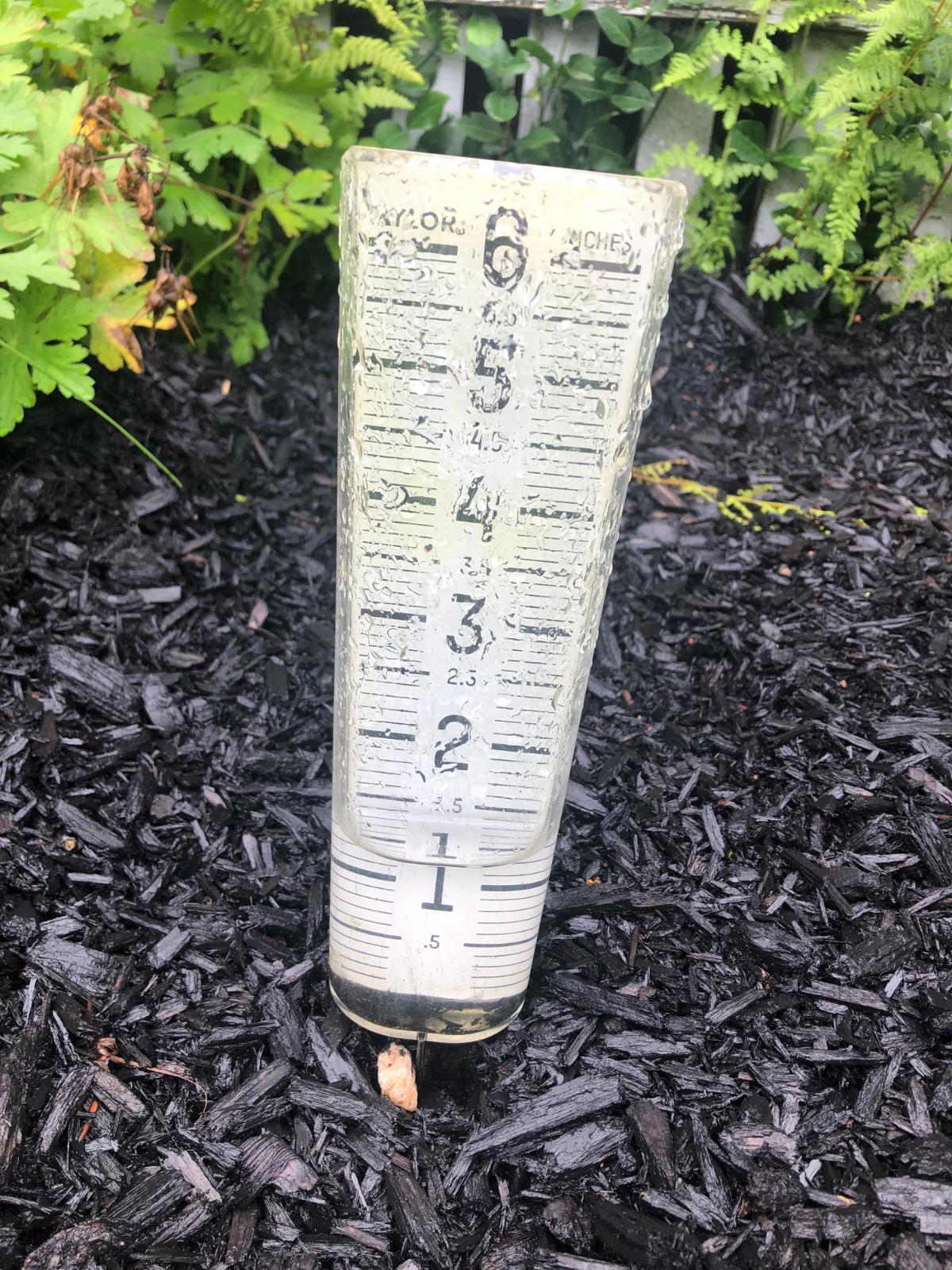
If you don’t want to move your containers, or if you can’t, you can help them stay watered by using watering spikes and gravity-style waterers.
You can either buy watering globes or make some simple DIY style plant waterers.
For large containers, use more than one spike or use a large globe.
You can do this for individual plants in the garden, too
16. Spray a dose of Neem oil
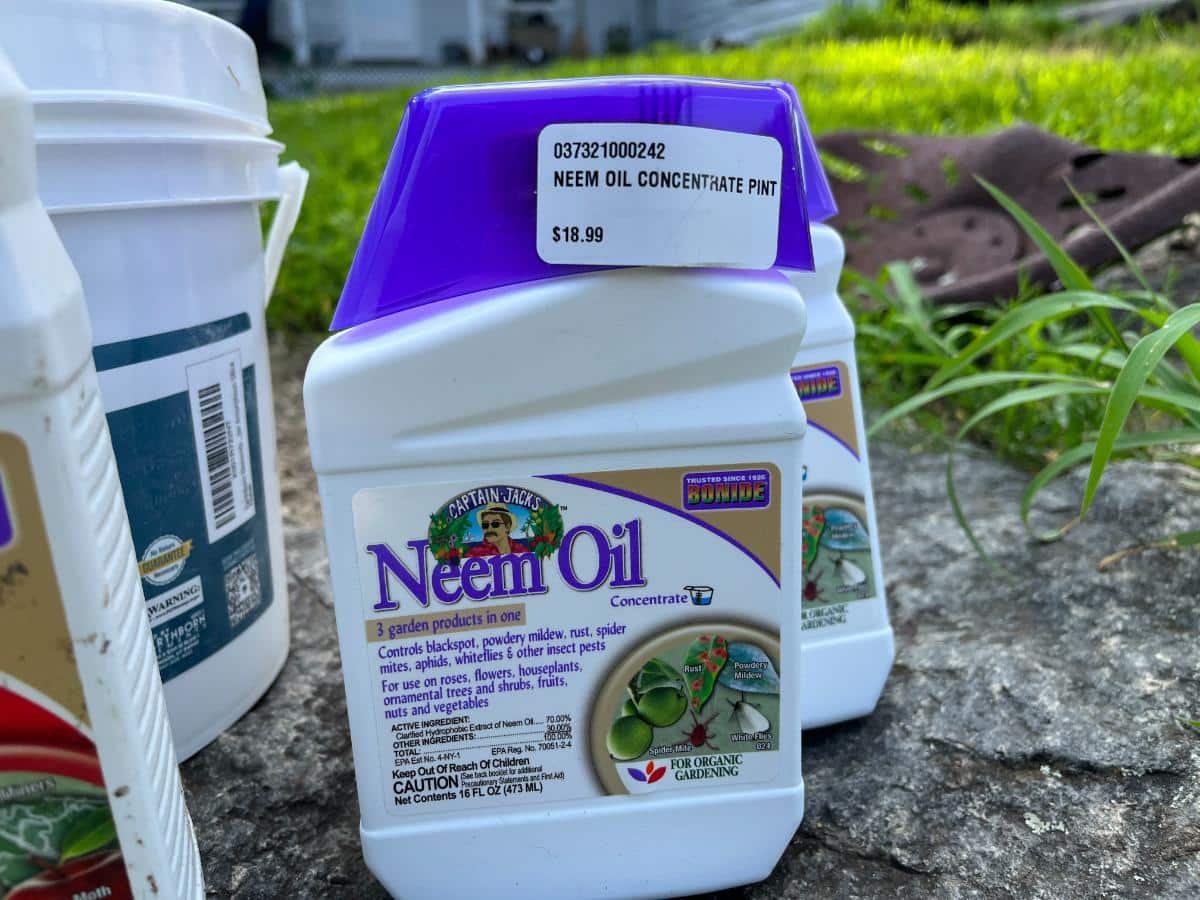
If you have pests in the garden, even if it’s just a budding problem, the problem can explode by the time you get back.
It’s wise to spray a dose of Neem oil before you go.
Neem oil is a natural, organic, broad-spectrum solution for many pest and disease problems in the garden. It should easily knock down insect infestations for a week or two and keep it to a level that shouldn't destroy things while you’re gone.
Just follow the label instructions to avoid damaging beneficial insects and pollinators. If you respect and protect them, they, too, will help protect your garden while you’re gone.
17. Bonus Tip: Plan to Give Your Garden Some TLC ASAP When You Get Home
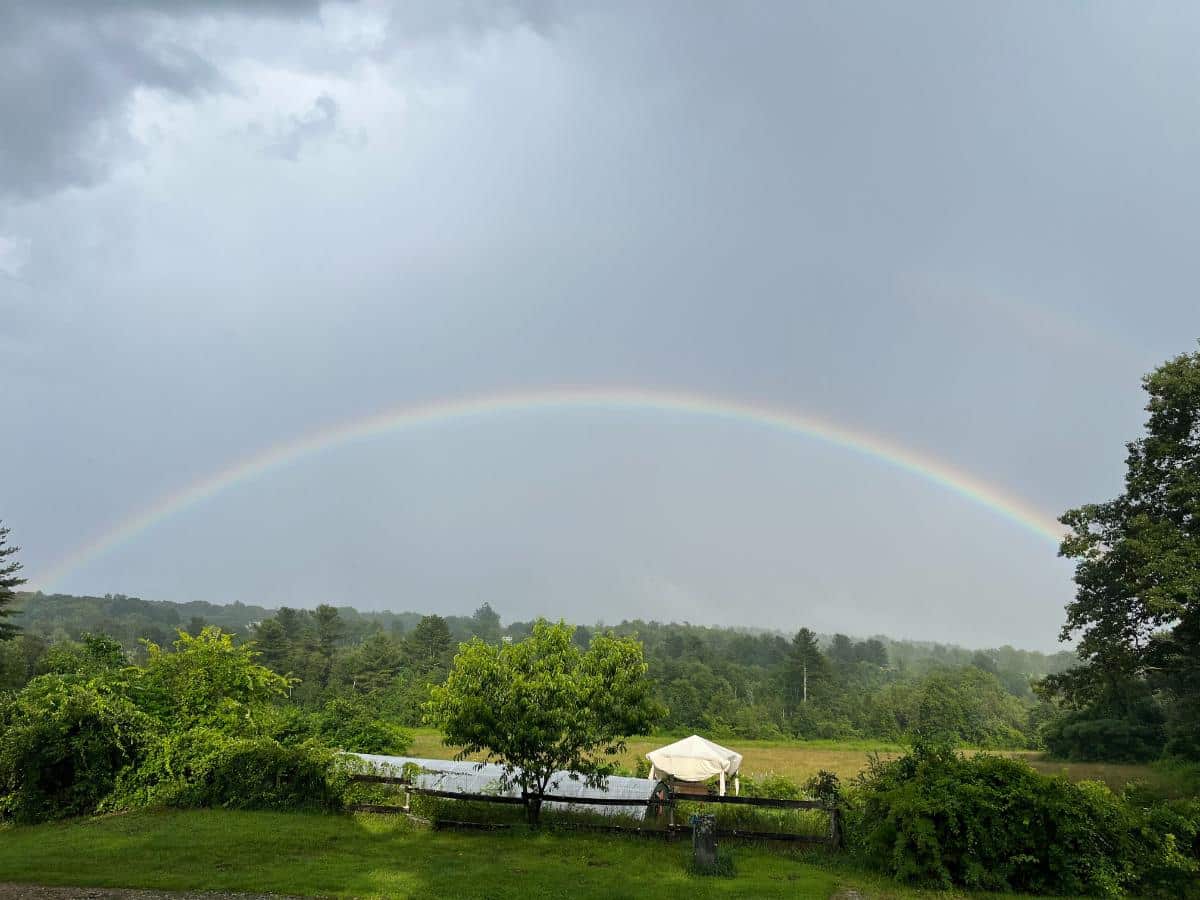
A week isn’t an exorbitant amount of time to “ignore” your garden while you are on vacation. Two weeks or more might start to raise some issues, so if it’s a long trip you’re taking, make some alternative plans for watering, harvesting, and general maintenance.
When you do get back, especially if you have not had a garden sitter, get back to your garden as soon as it is reasonable to do so.
- Water the garden as soon as possible if it’s been several days without water or rain
- Pick the garden off within a day of your return to reap the waiting harvest and keep those plants producing
- Look for new signs of insect infestation or disease and respond accordingly -- the earlier, the better
- Get back on weeding as soon as you can so the weeds don’t get ahead and they don’t rob moisture and nutrients from your plants
In general, just don’t waste too much time getting back out into your garden. Good care and maintenance will keep you and your plants ahead of the game and ensure that plants continue to produce to their fullest potential.

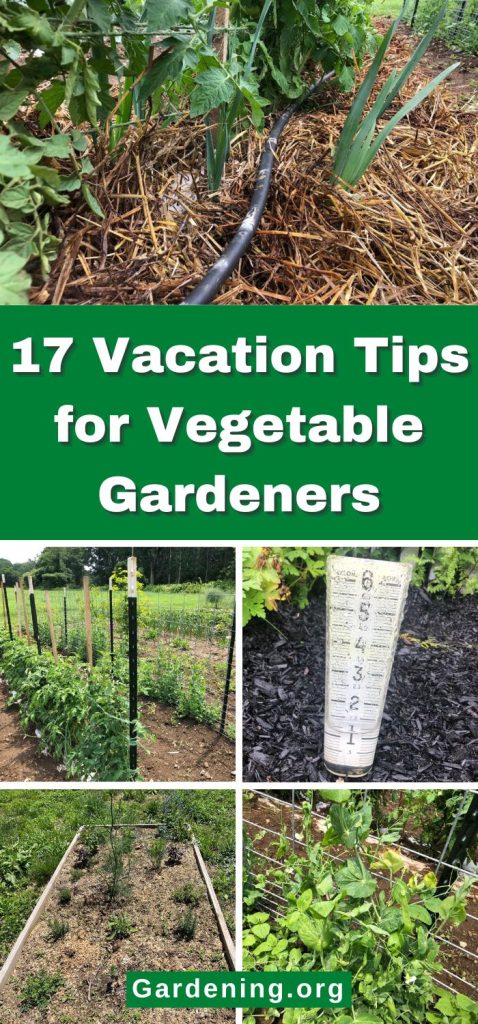
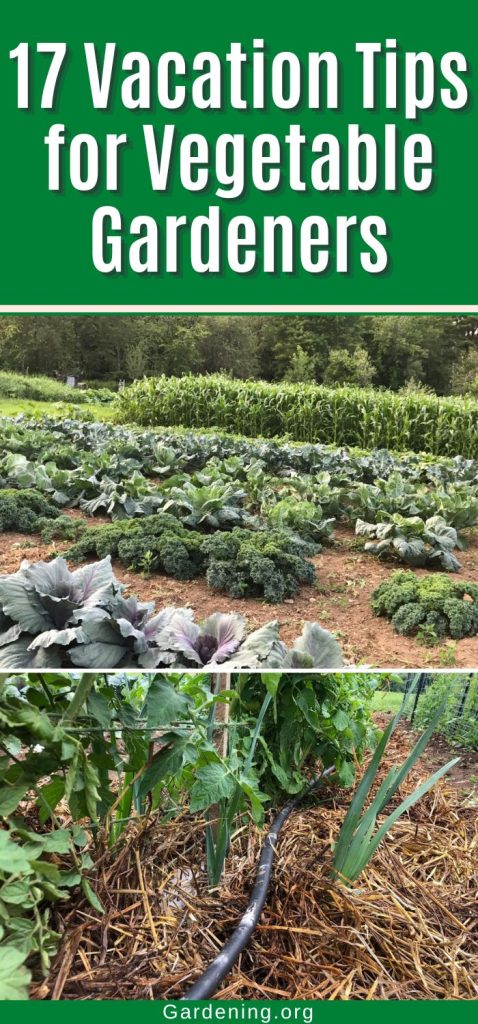
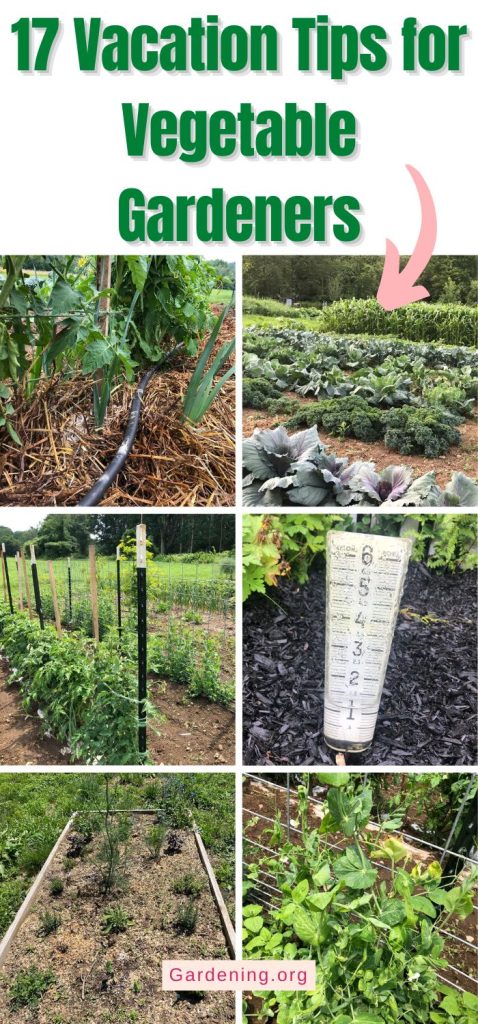
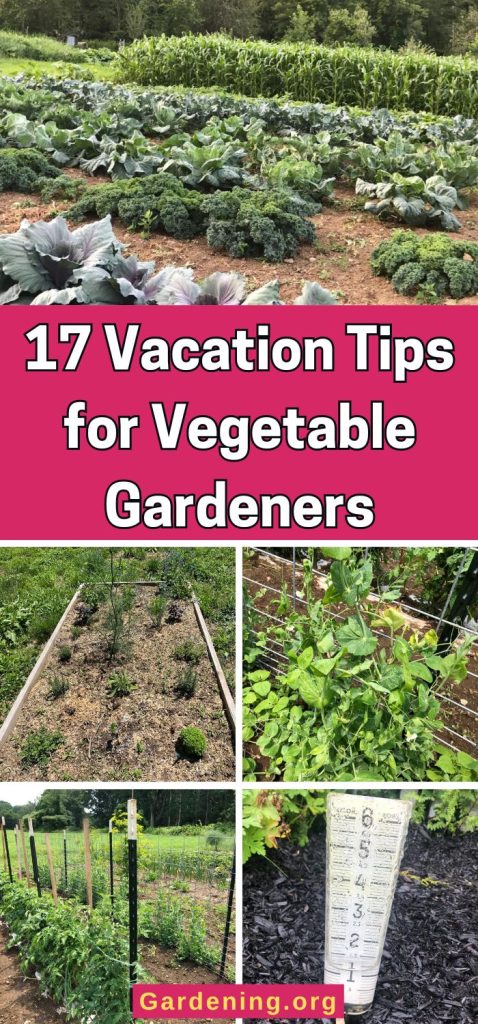




Leave a Reply